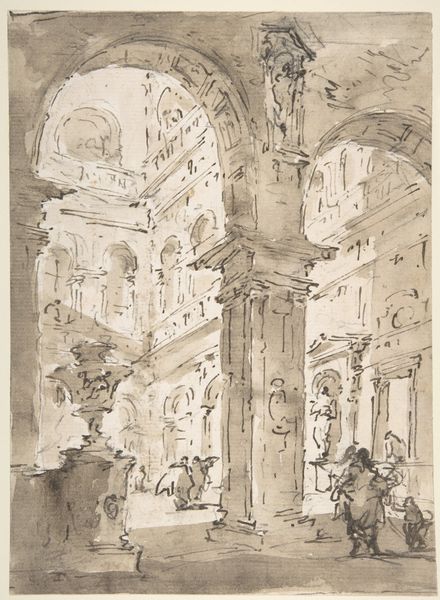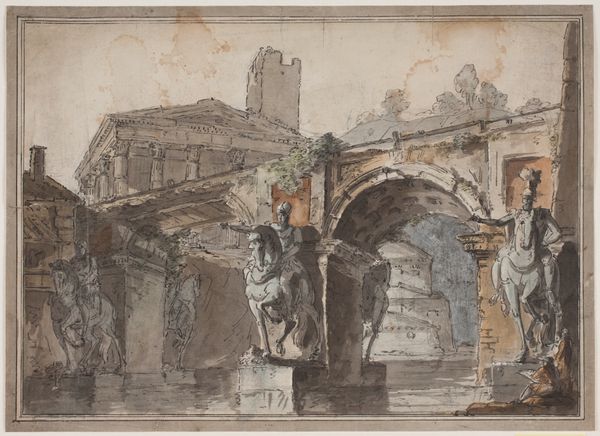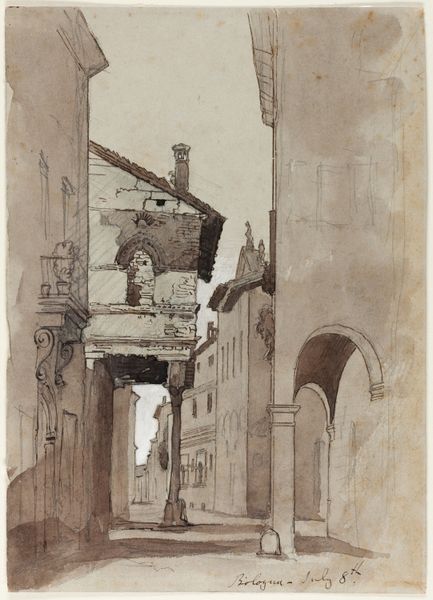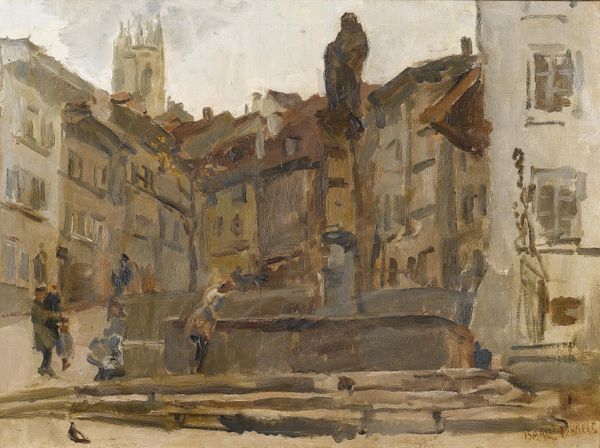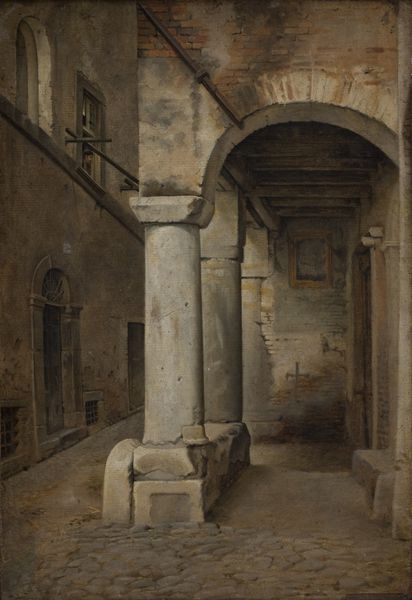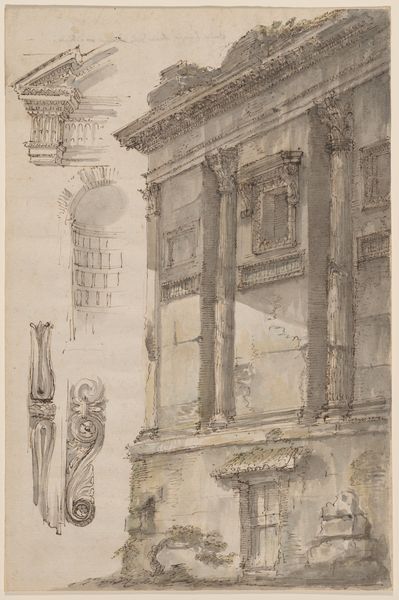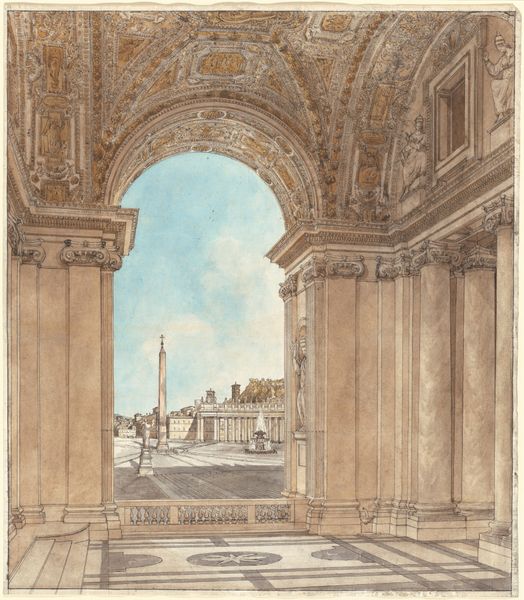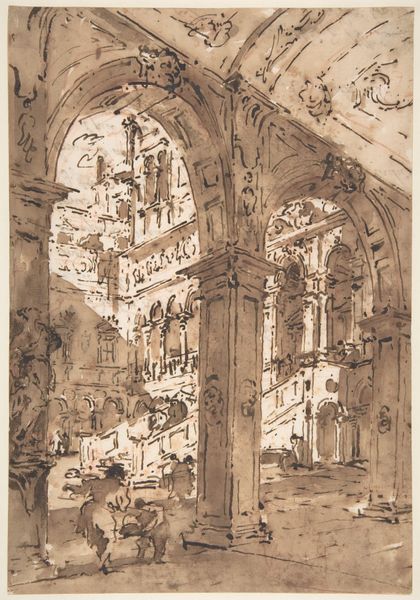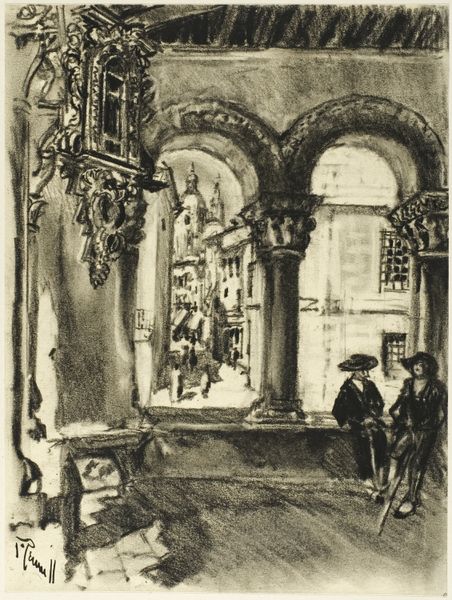
Copyright: Public domain
Curator: Right in front of us, we have Isaac Israels' "Piccadilly Circus, London" from 1915. A bustling cityscape rendered with what seems to be watercolor. Editor: The first thing that strikes me is how indistinct it is, as if seen through fog. There's a real haziness to the buildings, yet you can still discern the chaos of London life unfolding. Curator: Israels really captures a sense of fleeting movement, don't you think? I imagine him sketching rapidly, trying to get down the essence of this iconic London landmark. Watercolor must have lent itself to the speed needed to convey all the life occurring in Piccadilly. We see figures gathering at the base of Eros; are they waiting for transport? Taking a break? Editor: What's fascinating is how the artist has represented the urban environment here using such humble materials. Watercolor on paper seems a fragile medium to carry so much information, but Israels turns what looks like mere brushstrokes into buildings, buses and people. There's a beautiful economy of means at play here. Curator: Indeed! I’m reminded that Israels was part of the London Group at the time, along with many others from the Impressionist movement. They were questioning academic styles of art. A scene of modern London created with techniques reflecting modernity itself, like those of his contemporary Monet’s work. Editor: Right, and if you look at the materiality, paper like this would have been quite cheap and mass-produced, a total shift from the expensive canvases and oil paints favored by earlier generations of landscape painters. It allowed artists to explore a broader range of subject matter – even something as quotidian as Piccadilly Circus. What do you feel when looking at it? Curator: Well, it stirs something in me. There's a loneliness amid the crowd that somehow captures the alienation of modern city life. It’s both beautiful and a bit sad, that London smog-filled view of Eros, watching over the changing world, still there to this day, in his way. Editor: Yes, this little painting invites big feelings while revealing an artistic process that mirrors the shifts in both labor and perception of art during the early 20th century. Curator: In other words, "Piccadilly Circus, London" isn't just a view, it’s a material document, a portal back to London, and into Israels’ creative insight in a particular time. Editor: Absolutely. And seeing art's ties to broader society makes the viewing experience that much richer, I believe.
Comments
No comments
Be the first to comment and join the conversation on the ultimate creative platform.
